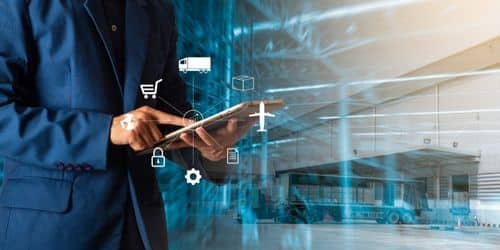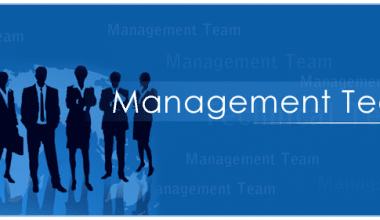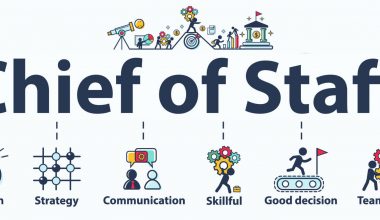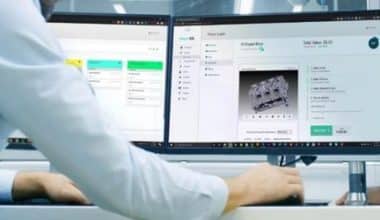Technology keeps upsetting supply chains and logistics operations by fundamentally altering them. According to Research and Markets, the use of connected logistics will grow as IoT and new technologies become more prevalent across industries. As a result, the management of materials, goods, freight, sales orders, inventory, and manufacturing will change as logistics become more streamlined and quick. Everything you need to know about logistics management (LMS) software with a transportation system is covered in this article.
Logistics Management System (LMS)
LMS (Logistics Management Software) streamlines logistics processes by streamlining the production cycle and facilitating quick access to vital data. Businesses may manage the many steps in the production cycle, from receiving raw materials to sending finished goods to customers, with the aid of logistics management software.
Moreover, software for logistics has expanded in scope and capabilities to handle a wide range of operations and processes. Presently, the logistics management system (LMS) is comparable to supply chain management software (SCMS), which has capabilities for managing suppliers, procedures, and transactions. A logistics management software has the following capabilities:
- Handling client demands
- Carrying out purchase orders
- Inventory Control
- Vendor Management
- Distribution and Sales
Benefits of Logistics Management System Software
Within a transportation system, the task of logistics management software offers many benefits in logistics. The following are some of the advantages that a transportation system or third-party logistics providers get while using logistics management software.
#1. Refine Transportation
An important component of logistics is transportation. It is the most expensive in terms of mileage, energy, labor, tolls for the roads, and shipping costs. Utilizing logistics software can assist in managing the many modes of transportation and utilizing operational data for process automation.
#2. Faster Delivery
The logistics and supply chain sector deals with a number of problems that slow down deliveries. Businesses may quickly deliver their items to clients by using logistics software. By making significant adjustments to the manufacturing cycle and selecting the most appropriate carrier, logistics management software can increase delivery speed. In the end, it significantly lowers delivery delays.
#3. Minimize Human Errors
If you want to minimize human errors of commission or commission, then you really need to integrate logistics management software into your transportation system. Reducing human error is a significant benefit of using logistics management software. Large amounts of transportation data require manual analysis, which is challenging, time-consuming, and also prone to errors. However, a logistics program can swiftly and accurately process this data, advancing the processes with little to no delays.
#4. Automates Functions
Process automation is a huge benefit of integrating logistics software. Utilizing logistics software makes it simple to automate and manage tasks like planning loads, designing shipment routes, and tendering loads to carriers. Additionally, it gets rid of paperwork, which makes it easier to handle operations quickly and effectively.
Five Essential Elements of Logistics Management
The following are five essential elements of logistics management;
#1. Warehouse Management
The first feature of the logistics management system (LMS) is warehouse management. Warehouse management systems are used to track and automate all warehouse operations using logistics software. It generally encompasses all the activities involved in the supply chain, including obtaining and preserving goods, moving them, and tracking deliveries. The task of coordinating and monitoring the orderly transportation of items from the warehouse to the clients is left to logistics management software.
#2. Transportation Management
Transportation management is the logistical process that ensures end-to-end movement visibility. Software for transport and logistics management assists in the planning of efficient warehouse management and multiple deliveries in both the forward and the reverse direction to better serve customers.
#3. Final-Minute Activities
This is the final step in the logistics delivery supply chain. It generally helps with end-to-end delivery using logistics software. It comprises choosing consumer items that are in good enough shape to be delivered from the warehouse. Moreover, the logistics and supply chains may resemble a small or large package delivery carrier because customers’ attention is concentrated at one moment in one place. So, logistics management software helps with the final minutes’ activities of a transportation system.
#4. Customer Service Management
Another astounding feature of the logistics management system (LMS) is its excellent customer service. The fast response to all client questions and requests is ensured by this logistics management application. The logistics software ensures that involving customers in problem-solving is frequently successful.
#5. Returns Management
All supply chain operations are covered by logistics fleet management software in both forward and backward motion. Logistics software ensures that there is a relay inquiry and information detection when a customer returns an item due to damage or another reason. This allows the program to collect customer and item data and determine how to best satisfy the customer’s needs.
Logistics Management System Software
The trend toward technical operations in companies today, particularly supply chains and logistics, has a favorable impact and stands out as an advantage. Software for logistics management systems has been viewed as the foundation for operational support and positive customer experiences. In order to make important judgments, this digitized impact relies on automation and data use. The following are some examples of software LMS;
#1. Odoo
The first on our list of logistics management system software is Odoo. Tens of thousands of apps are available on the cloud platform Odoo, which can be used to build a whole unique ERP system. Because its features can be easily updated to suit new ideas and methods, this app-heavy design is great for businesses that are expanding or trying to scale.
#2. Oracle’s PeopleSoft
In order to help manufacturers, retailers, and warehouses better comprehend analytics, Oracle’s PeopleSoft software is built up of a range of capabilities. Any organization can use the program because it is totally adaptable. Another advantage is PeopleSoft’s user-friendly interface, which most employees find easy to learn and use.
#3. SAP ERP
Large businesses can combine their procurement, manufacturing, service, sales, finance, and HR departments into a single, user-friendly system by using SAP’s classic ERP. Because some of SAP’s customers are significant participants in the market, the software maker frequently introduces new apps and add-ons so that its users can continue to modify their systems to promote growth.
#4. Scoro
Departments and the entire organization instantly gain more structure thanks to the end-to-end business management Scoro’s ERP provides. Because all necessary information, from finances to HR, is in one place, decision-makers have more opportunities to make timely, informed judgments.
#5. Apprise
Distributors of consumer goods can choose from a number of dynamic ERP solutions from Apprise. The company’s solution comprises committed ERP specialists that can help businesses set up, process, and align with industry best practices.
#6. Brightpearl
Brightpearl is one of the most well-known names in ERP software. And for good reason: the company provides comprehensive solutions that can be mixed and matched to provide customers with a seamless shopping experience as well as effective management solutions for its clients in the consumer goods industry.
#7. Epicor
Epicor is a market leader in the ERP space since it creates solutions for companies of all sizes operating in a variety of different industries. The specialist ERPs provided by Epicor cover manufacturers, distributors, retailers, and service providers involved in small, mid-sized, and big global organizations.
#8. FinancialForce
With FinancialForce’s adaptable, totally cloud-based accounting platform, key managers working to develop your business may have complete transparency. Because cloud-based technology is accessible from anywhere, your entire company may benefit from real-time financial analysis, modeling, and compliance reporting at any time of the day.
Transportation Software Logistics Management System
A transportation management system (TMS) is a platform for logistics that uses technology to help companies plan, carry out, and optimize the physical movement of goods, both incoming and outgoing, as well as to make sure the shipment is legal and that the required paperwork is on hand. Often, such a system is a part of a larger supply chain management (SCM) system. The timely delivery of freight and goods is ensured by TMS, which also provides visibility into daily transportation operations and information and documentation on trade compliance. Transportation management systems assist businesses in managing and optimizing all facets of their transportation operations, whether they involve land, air, or sea transportation. They also streamline the shipping process. Here are the various software logistics:
#1. EPG ONE
The EPG ONE Transportation Management System (TMS) oversees the whole transport process, from optimal route planning to route selection and delivery. A powerful AI engine included in the system quickly determines the best route for the excursions and continuously improves it. Thanks to a cutting-edge “collaborative routing” strategy, the TMS has very sophisticated and successful route optimization.
#2. Route4me
The resolution of the route’s unrest Route4Me creates routes for your business automatically and sends them to a mobile app with built-in navigation. It is quite easy to use. Perfect for last-mile optimization in every sector, including territory management, field service, sales, and marketing. Route4Me, which provides the most well-liked route sequencing and optimization software for businesses of all sizes, has over 35,000 customers.
#3. Routetitan
You can make more deliveries with Routetitan at a lower cost: 1. Choose the routes that are the most efficient based on factors including time frames, breaks, speeds, stop a priority, and more. 2. Using our API, importing a spreadsheet, or both, you may rapidly input your stops. 3. Use custom messages to provide automatic email or SMS notifications, such as ETAs. 4. You may even allow customers to follow the progress of your drivers in real-time. 5. Secure a signature or photo as delivery verification.
#4. Onfleet
Onfleet’s state-of-the-art transportation management software makes it simple for couriers to plan and manage their local deliveries. Onfleet offers dispatchers a real-time web dashboard, drivers’ simple smartphone apps, and your client’s automated SMS notifications and driver tracking. Integration with a variety of systems, including those for online ordering, is made possible through our API. In more than 60 different countries, couriers have used our software to complete millions of deliveries. Begin your trial today without cost.
What is Logistics Management Example?
Typical logistics management activities include the management of inbound and outbound transportation, fleets, warehousing, material handling, order fulfillment, logistics network architecture, inventory control, supply/demand planning, and administration of third-party logistics service providers.
What Are The 4 Areas of Logistics Management?
The four subcategories of logistics management are supply, distribution, production, and reverse logistics. Every type focuses on a certain link in the supply chain.
What Are The Main Tools Used For Logistics Management System (LMS)?
Check out the top four tools and techniques being used in logistics management right now.
- Supply Chain Management Software (SCM)
- GPS and tracking tools.
- Drones.
- Mobile phones and smart devices
What Is The Purpose of a Logistics System?
The basic objective of logistics management is to ensure that the products are delivered in good condition to the appropriate person at the appropriate location by providing the appropriate number of resources or incorporating them into the supply chain at the appropriate moment.
How Does a Logistic System Work?
The logistics system is a part of supply chain management that is used to efficiently move and store associated information, goods, and services from point of origin to point of consumption in order to satisfy client needs.
How Do You Manage Logistics Effectively?
The following five suggestions are relevant for better logistics management
- Spend some time developing a sound plan.
- Always have a backup strategy in place.
- Employ a logistics manager with excellent people skills.
- Wherever you can, automate your systems.
- Take note of your errors.
Conclusion
Managing logistics is a strenuous activity that would be almost impossible without automated real-time software. Luckily, there are tons of free and premium cloud-based software available to make things easier for dispatchers and managers.
Logistic Management Systems FAQs
What role does technology play in logistics?
Technology improvements have increased the efficiency of the supply chain, lowering costs and cutting down on mistakes.
What are the main tools used for logistics management system?
- Supply Chain Management Software (SCM)
- GPS and Tracking Tools.
- Drones.
- Mobile Phones and Smart Devices.
- Value Chain Analysis: Steps to Value Chain Analysis
- Supply Chain Management: What is SCM and Why is it Important?
- REVIEWS OF TOP SUPPLY CHAIN MANAGEMENT SOFTWARE IN 2023
- 5 Reasons Why ERP Software Is Important for Growth






